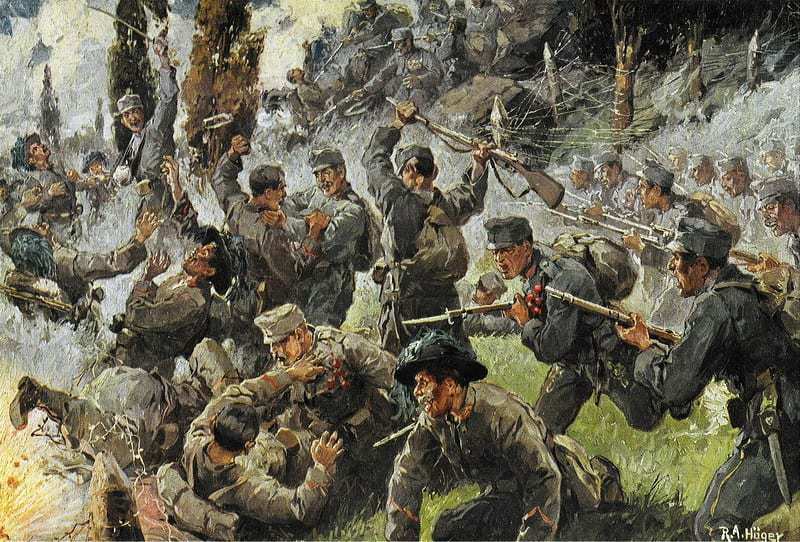On June 23, 1915, exactly one month after Italy declared war on Austria-Hungary, the Italian army attacks Austro-Hungarian positions near the Isonzo River, in the eastern section of the Italian front; it will become the first of twelve Battles of the Isonzo fought during World War I.
Of all the fronts of the Great War, the Italian was the least well-suited not only for offensive operations but for any form of warfare at all. Four-fifths of Italy’s 600-kilometer-long border with Austria-Hungary was mountainous, with several peaks rising above 3,000 meters. Despite this, the Italian chief of staff, Luigi Cadorna, desperately wanted to satisfy the demands of his government-and also France and Britian-by taking substantial territory from Austria-Hungary upon Italy’s declaration of war on May 23, 1915.

For its part, Austria-Hungary was surprisingly unconcerned with the Italian entry into the war, despite the fact that it opened a third front for an army whose resources were already stretched dangerously thin. In the years before the war, the Austrian commander in chief, Conrad von Hotzendorff, had often suggested a pre-emptive strike against Italy, as well as against Serbia; in 1915, the prospect of confronting an inferior Italian army seemed to lend a new burst of energy to the Dual Monarchy. Germany, though, pressured Austria-Hungary to fight defensively in Italy and not to divert resources from the Eastern Front against Russia. As a result, while the Italians plotted ambitious offensive operations, including surprise attacks across the Isonzo River, the Austrians settled into their positions in the mountains along the rapid-flowing Isonzo and planned to mount a solid and spirited defense.
After a series of preliminary operations on various sections of the front, Italian forces struck the Austrian positions at the Isonzo for the first time on June 23, 1915, after a one-week bombardment. Despite enjoying numerical superiority, the Italian forces were unable to break the Austro-Hungarian forces, Cadorna having failed to assemble adequate artillery protection to back up his infantry troops-a mistake similar to those made early in the war by commanders on the Western Front. Two Austro-Hungarian infantry divisions soon arrived to aid their comrades at the Isonzo and the Italians were prevented from crossing the river; Cadorna called off the attacks on July 7.
In the four battles fought on the Isonzo in 1915 alone, Italy made no substantial progress and suffered 235,000 casualties, including 54,000 killed. Cadorna’s plans for a highly mobile Italian advance had definitively failed, and battle on the Italian front, as in the west, had settled into slow, excruciating trench warfare.

